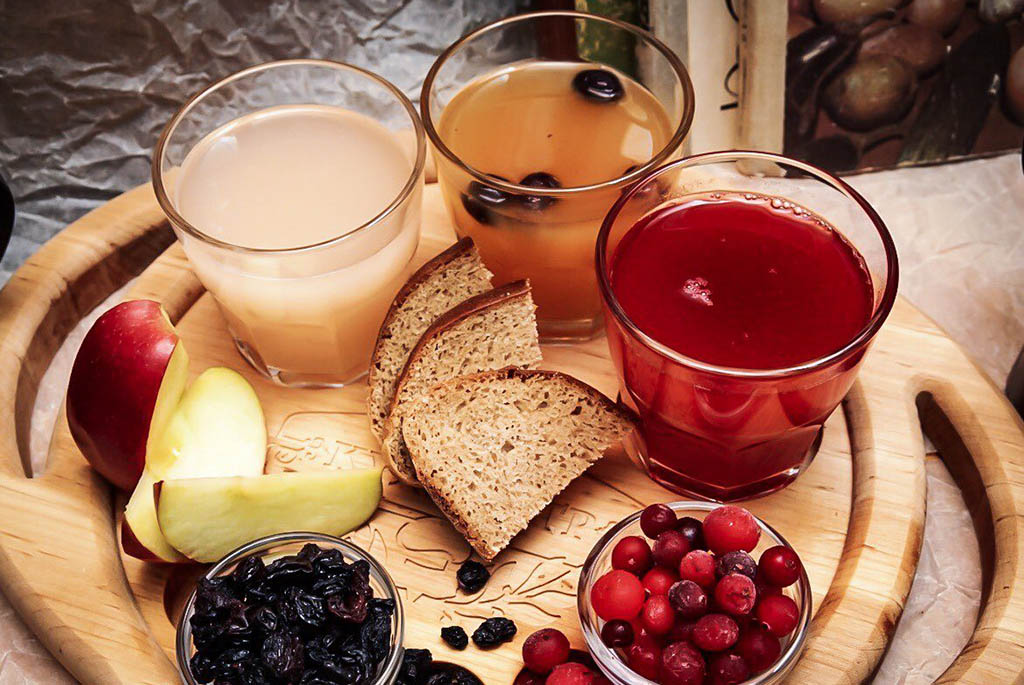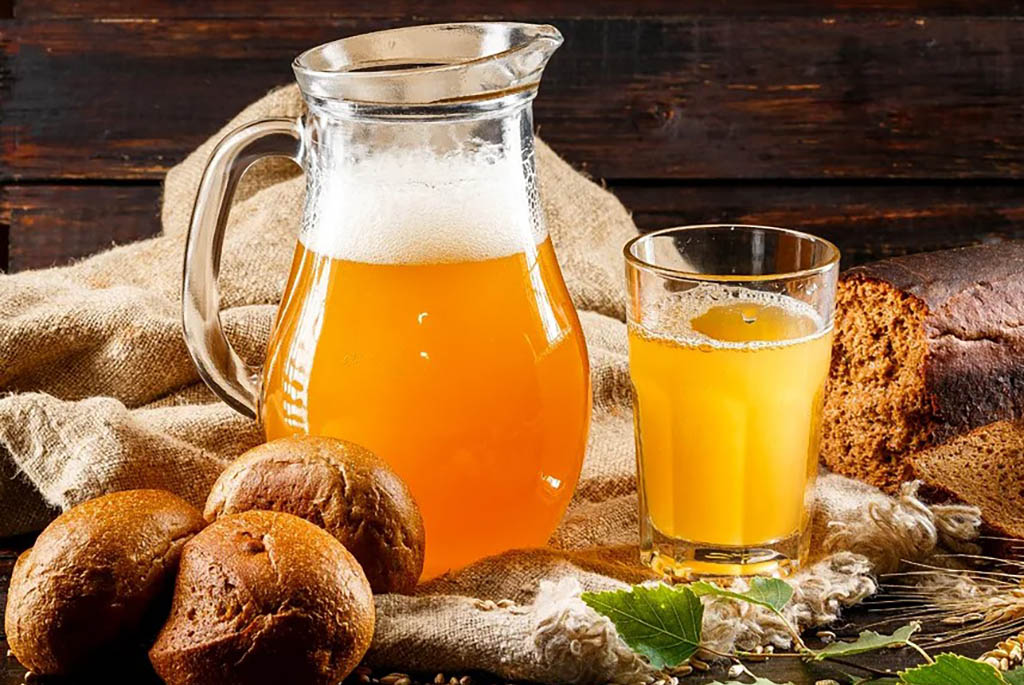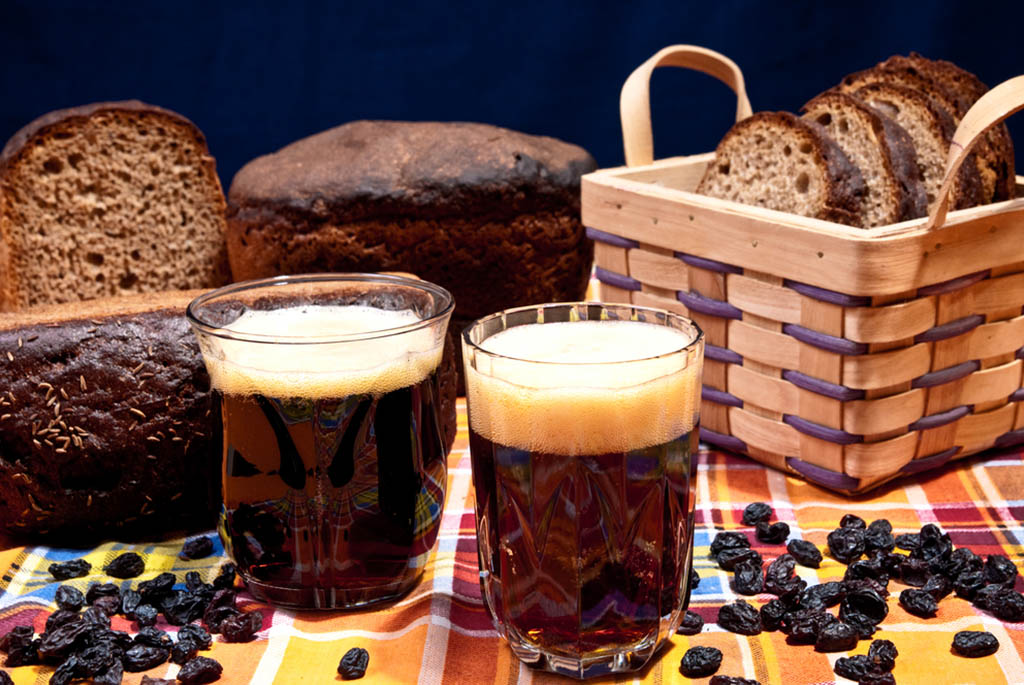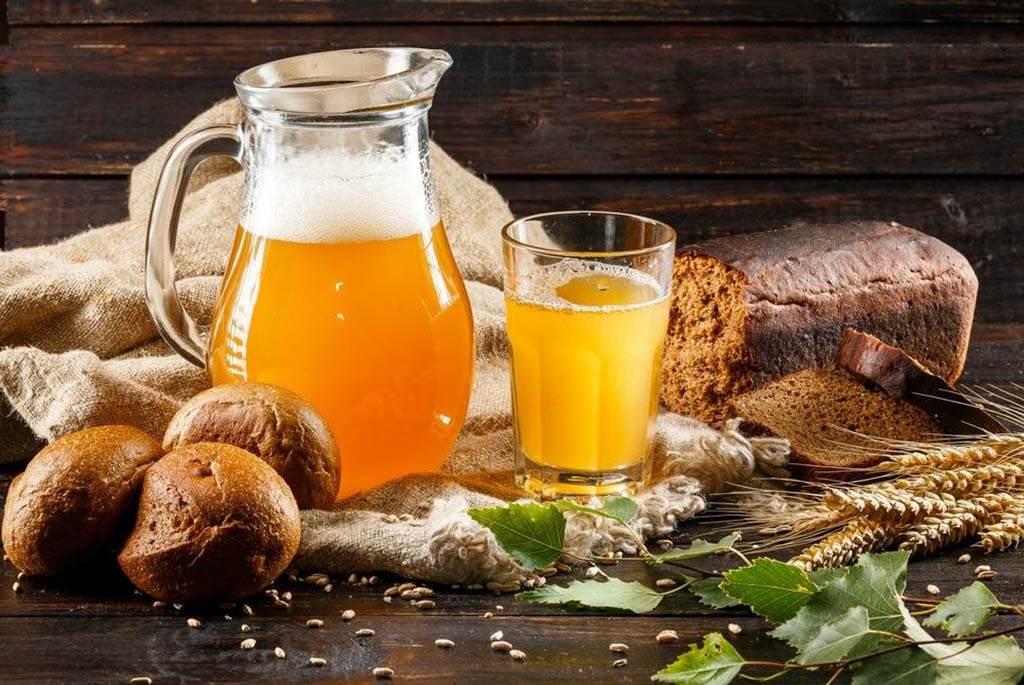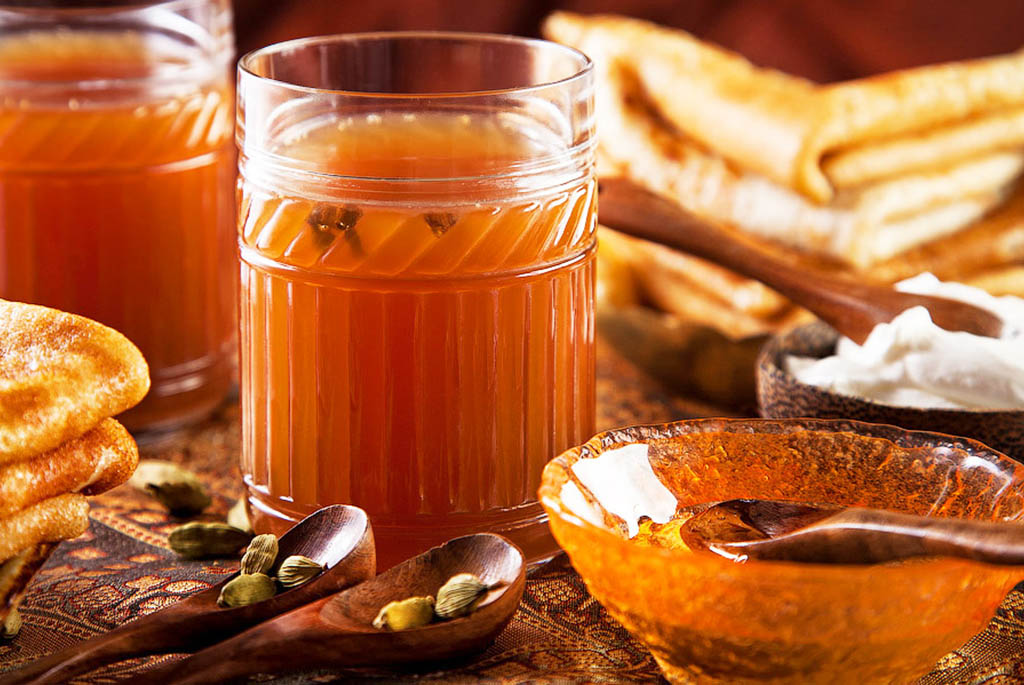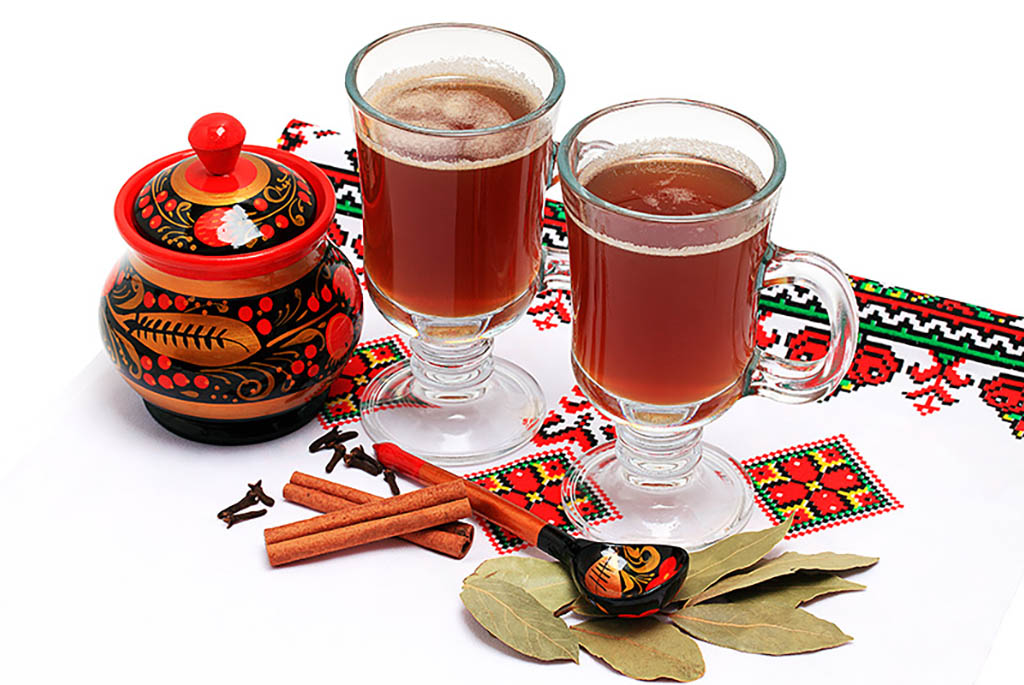Traditional dishes and drinks are also an important part of the culture, symbolizing Belarusian warmth and hospitality. Let's talk about the drinks that traditionally accompanied Belarusian holidays and feasts.
Kvass
Kvass is one of the most popular traditional drinks in our country. It is prepared by fermenting a mixture of bread or grains – rye, barley. The fermentation process gives the drink a refreshing, light taste with a hint of sourness. Kvass was predominantly consumed in the warmer months. It was made at home, and each family had its special recipe. Sugar, berries, raisins were added to the drink. Kvass is still popular among Belarusians. It is sold both in bottles and from barrels. The country produces various types of kvass, including white, rye, cranberry, currant, and others.
Sbiten
Unlike kvass, sbiten was consumed in winter. It was a fragrant decoction of herbs and spices with the addition of honey or sugar. During the preparation of sbiten, all ingredients were boiled together so that the spices could impart their aromas and flavors to the drink. Sbiten was made with lime blossom, birch leaves, medicinal herbs. Spices used included cloves, pepper, cinnamon, bay leaf. For those who preferred stronger drinks, beer or spirits were added to sbiten.
Beer
This hop-based drink spread in Belarus in the 12th century, but gained particular popularity during the times of the Grand Duchy of Lithuania. The brewing recipe included three main ingredients – water, malt, hops. To diversify the taste, honey, raisins, and spices were added to the beer. All social classes consumed beer – from princes and nobility to soldiers and peasants. In modern Belarus, this hop-based drink is no less popular. Products of national manufacturers receive awards at international contests and high ratings from industry experts.
Uzvar
A healing drink reminiscent of compote, which was made from a large number of dried fruits – dried pears, apples, plums, cherries. Some housewives added honey and spices to the drink. Uzvar was a must for family and religious holidays.
Horseradish Vodka
The main ingredient of this drink is horseradish root. It gives the horseradish vodka its sharpness and characteristic aroma. Grated horseradish root was soaked in vodka or moonshine, then left to infuse for about a week, allowing the spicy root to impart a pungent taste and beneficial properties to the drink. Honey and spices were added for special flavor nuances. This warming drink was traditionally prepared at the beginning of autumn. It was believed that the horseradish root was most beneficial at this time.
Vodka and Moonshine
In Belarus, these strong drinks were known as "garelka" or "garelae wine." They were made by distilling rye, barley, potatoes, or beets. "Garelka" was consumed in small portions and on special occasions. It was often used to make various tinctures – berries, herbs, and roots were infused in it. The most popular varieties were "zhitnevka," made from rye, and "bulbyanka," made from potatoes. The strength of Belarusian "garelka" ranged from 15-20% to 70%. Modern Belarusian vodka is made from high-quality purified alcohol and softened water, but traditional rye distillates can also be found on store shelves. The production of moonshine in Belarus is prohibited, except in some museums and national parks, where it is made for cultural and ethnographic purposes.
Zubrovka
It is believed that the recipe for zubrovka was invented in the 16th century by huntsmen of Belovezhskaya Pushcha. The main component of the drink is the zubrovka grass. The plant was infused in alcohol to obtain a unique flavor and aroma. Various herbs and spices were also used to enrich the taste. Belarusians believed that zubrovka had medicinal properties. The drink's flavor is characterized by bitterness and pleasant herbal notes.
Starka
Starka is referred to as "Belarusian whiskey" due to its similar taste and preparation process. The alcoholic base of the drink was produced by double distillation of rye mash in a distilling apparatus. The resulting liquid was placed in oak barrels previously used for wine or port, to which lime blossom, pear, and apple leaves were added. Starka was considered an expensive drink, so it was mainly consumed by princes and nobility.
Krupnik
A strong liqueur based on honey and spices – nutmeg, cloves, vanilla, cinnamon. The drink became popular in the 18th century and by the 19th, it had become a mandatory attribute of the noble table. Krupnik was consumed from small clay or porcelain cups.
The traditions of making national drinks have been passed down from generation to generation and have survived to this day. Beer, kvass, starka, zubrovka, and souvenir bottles with various tinctures can be seen on the shelves of Belarusian stores. Krupnik, horseradish vodka, uzvar, hot sbiten are served in national cuisine restaurants. Belarusian moonshine can be tasted at the museum complex "Dudutki," the national park " Belovezhskaya Pushcha", the interactive history park "Sula," and the manor-park complex "Dukorski Mayontak."
